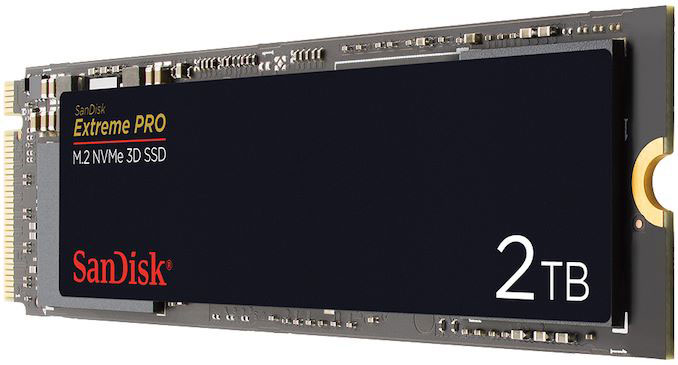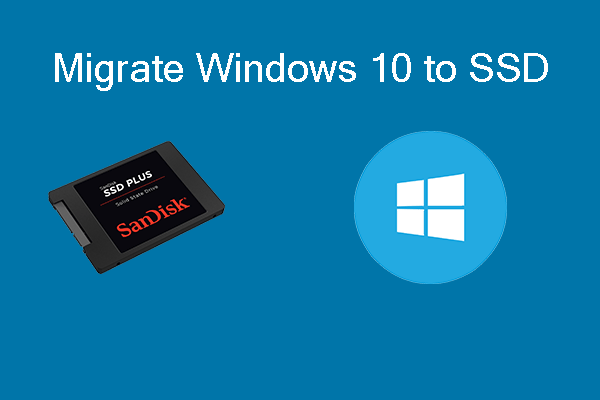Do you know Western Digital has quietly expanded its SanDisk Extreme Pro M.2 NVMe 3D SSD line to 2TB? This post will introduce this to you.
SanDisk Expands Extreme Pro M.2 NVMe 3D SSD Line to 2 TB
Earlier this year, Western Digital introduced WD Black SN750 and SanDisk Extreme Pro M.2 NVMe 3D SSDs. Both families are based on its in-house developed controller and 64-layer 3D TLC NAND memory. In addition, they feature the same components, the same levels of performance, and similar dashboard software.
However, the two families include different product models. WD Black SN750 line includes 250 GB, 500 GB, 1 TB, and 2 TB models, whereas the SanDisk Extreme Pro M.2 NVMe line only consists of 500 GB and 1 TB models.
One of the reasons why Western Digital decides not to add 2 TB model into SanDisk Extreme Pro M.2 NVMe line is the positioning of the brand. As we all know, SanDisk brand is mostly targeted at retail users.
However, Western Digital has quietly expanded its SanDisk Extreme Pro M.2 NVMe 3D SSD line to 2 TB and launched its SanDisk Extreme Pro M.2 NVMe 2TB SSD in Austria, Germany, and Japan. The price of the drive in Austria and Germany ranges from €466 to €570. As for the price in Japan, it is still unclear.

Performance
However, this launch indicates the SanDisk brand is still very popular among end users and 2 TB capacity is gaining popularity. The reason why SanDisk Extreme Pro M.2 NVMe 3D SSDs are so popular may be its good performance.
The SanDisk Extreme Pro M.2 NVMe 2 TB SSD offers a sequential read speed up to 3400 MB/s, a sequential write speed up to 2900 MB/s, a random read IOPS up to 480K as well as a random write IOPS up to 550K. Click How to Measure Disk Performance Easily to get an explanation about these values.
Controller
It has such a good performance maybe because of its in-house developed controller and 64-layer 3D TLC NAND memory.
Western Digital does not fully open all the information about this controller. We only know that this controller uses 28nm process, has 3 processor cores inside, and uses hardware acceleration to allow data to pass through the controller to arrive the flash memory directly, thus reducing processing delay and power consumption.
At the same time, the back-end flash memory supports 8-channel combination mode and requires additional memory used for placing FTL forms or for caching. This controller has advantages in compatibility, performance and cost.
64-Layer 3D TLC NAND Memory
Then, what is 64-layer 3D TLC NAND memory? NAND flash memory is mainly used in mass storage devices like GB USB flash drive and Solid-State Drive.
With the advancement of the 2D planar flash memory technology, the NAND flash memory with planar structure is close to its actual expansion limit after reaching the level of 15nm.
If NAND flash memory goes further, some problems may happen, for example: each flash storage unit stores less and less electrons; the number of anti-wear redundant electronic components decreases, which seriously affects flash memory’s endurance; moreover, the interference between the units also increases and the capacitive coupling interference has reached 25%.
In this situation, 3D NAND technology comes out. 3D NAND technology stacks multiple layers of data storage unit vertically. This technology can create storage devices that can have up to three times the capacity of storage devices created by comparable NAND technology. This technology enables higher storage capacity in a smaller space, resulting in significant cost savings, reduced power consumption, and significant performance improvement.
3D NAND technology develops from 24-layer, 32-layer, 48-layer, and up to 64-layer. Compared with 48-layer 3D NAND technology, Western Digital 64-layer 3D NAND technology can increase the unit capacity by 40%, which can reduce the cost per bit and increase the output of each Wafer. In addition, it also reduces electric field interference and provides more stable reliability.
In order to reduce the size of the memory cell, manufacturer also plans to increase the number of bits that can be stored in every single memory cell. Hence, MLC (Multi-Level Cell), TLC (Triple-Level Cell), and QLC (Quad-Level Cell) come out.
What’s the advantage of TLC? For example, an ordinary flash memory (created by SLC) has a capacity of 128 GB; then, MLC will make it have a capacity of 256 GB, and TLC will make it have a capacity of 384 GB.
In a word, SanDisk Extreme Pro M.2 NVMe 3D SSD 2TB is an excellent SSD. And now, it is available.



User Comments :